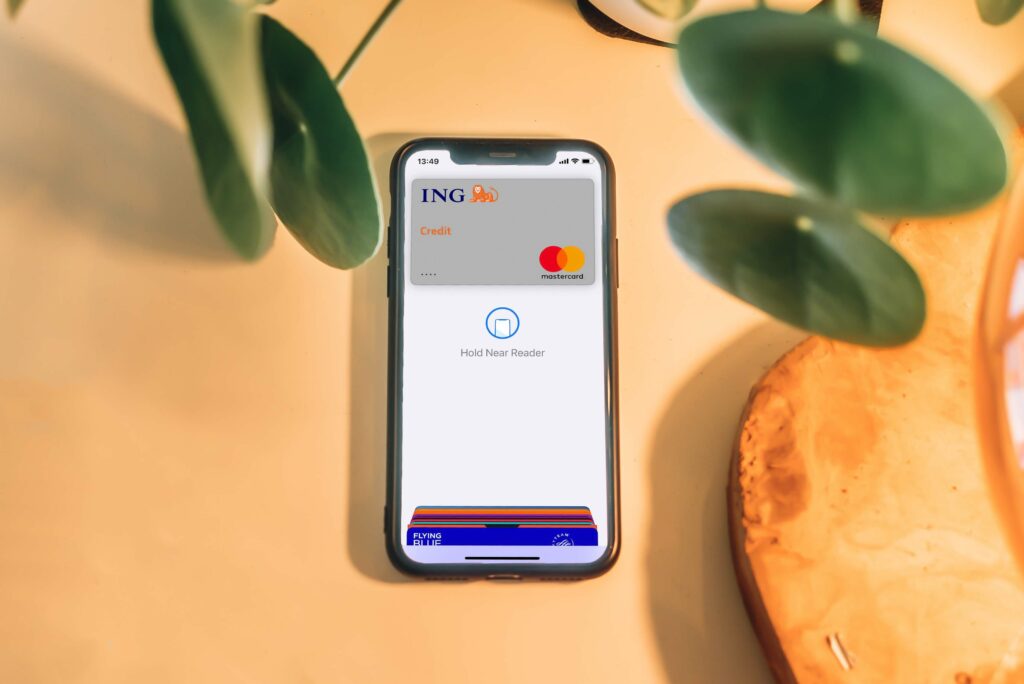Securing Mobile Transactions: Proven Strategies to Combat Check Fraud
In recent years, increased use of mobile banking has opened new avenues for fraudsters to exploit. The same convenience and speed that has made mobile check deposits a popular choice for consumers has also made them an attractive target for criminals.
One common fraudster tactic is stealing checks from mailboxes and then selling them on the dark web. The fraudsters will either wash the check – altering the payee and amounts – or create multiple counterfeits and deposit via mobile. This is further exacerbated by the ease with which criminals can easily sign up for “drop accounts” where they deposit the stolen checks.
To combat mobile check fraud, financial institutions need to implement stricter requirements for documentation when opening new accounts, and then closely monitor the behavior of these new accounts. This may include placing holds on check deposits until there is a good track record established, lowering the amount of funds available within the first 24-48 hours, and lowering amount thresholds for review. These measures allow banks to ensure the security of their mobile transactions and protect their customers from becoming victims of mobile check fraud.
The Scope of Check Fraud in Mobile Banking

There’s no question that the rapid growth of mobile banking has given customers a more convenient way to manage their finances. However, it has also opened the door to new types of fraud, particularly mobile check fraud.
The key for fraudsters is the ability to remain relatively anonymous. Fraudsters are able to purchase disposable mobile smartphones (also known as burner phones), use stolen identities, and open multiple drop accounts to deposit counterfeit or altered checks.
These are not strictly seasoned fraudsters. Reports have shown that the ease of check fraud is inviting the “casual fraudster.”
As noted by Ingo Money’s Chief Risk Officer Bill Roese in a recent article from PYMNTS.com:
“Imagine that you’re using remote deposit capture offered by your bank. You take a picture of the front and back of your check, but now you have the check. In prior banking experience, you would have turned that check into the teller. It’s almost a crime of convenience. Now you’ve got this check, you’re having trouble making your rent, so you deposit it again [elsewhere], or take it down to a check casher” and cash it a second time.
Techniques Used By Fraudsters
Some of the commonly used techniques used by fraudsters to successfully commit fraud – including checks – are listed and explained below:
Phishing is a tactic where attackers pose as legitimate institutions or individuals to deceive victims into revealing sensitive information, like login credentials. They often use email or social media platforms to distribute fake messages with links or attachments that lead to fraudulent websites or install malware on the user’s device. This can enable fraudsters to access business and personal bank accounts.
Spoofing refers to disguising a communication to make it appear as if it came from a trusted source. Fraudsters use spoofing to trick users into revealing personal information or click on malicious links. For example, a spoofed email may mimic a bank’s email address and notify the recipient of a pending check deposit.
Social engineering is similar to phishing in that it manipulates people into revealing sensitive information, but it’s often done through more direct interactions. Fraudsters may use phone calls, text messages, or in-person encounters to deceive victims.
Malware is malicious software designed to infiltrate and compromise a user’s device. In the context of mobile check fraud, criminals may use malware to intercept check images, manipulate transaction data, or hijack account logins.
Data breaches occur when attackers gain unauthorized access to an organization’s network, resulting in the theft or exposure of sensitive customer information. This information, including account numbers and personal details, can be used to commit mobile check fraud.
Account takeover is a type of fraud where criminals use stolen login credentials or other personal information to access and control a user’s bank account. Thieves can purchase stolen checks from mailboxes on the dark web and deposit them via mobile using compromised accounts.
To combat the use of stolen checks and drop accounts, financial institutions can implement stricter requirements for account opening, such as requesting additional documentation and monitoring new account behavior. Implementing holds on check deposits for new accounts can minimize the risk of fraudulent transactions until a reliable track record is established.
By being aware of these techniques and taking proactive measures to strengthen security, banks can protect themselves and their customers from the threats posed by mobile check fraud.
How Customers Can Prevent Mobile Check Fraud

Mobile check fraud is a growing concern and a challenge not just for financial institutions, but also their customers. Customers can play a crucial role in mitigating the risks associated with mobile check fraud by adopting secure practices. In this section, we’ll discuss some practical steps customers can take to prevent mobile check fraud.
First and foremost, customers should use a secure encryption method for mobile check transactions. This means utilizing a mobile banking app that employs strong encryption technology in their data transmission, ensuring that sensitive information such as account numbers and personal identification is protected when transferring funds between accounts or depositing a check.
To guard against fraudulent transactions, customers should regularly review their account activity and set up notifications for any unusual or suspicious activity. This way, they can quickly spot and report any unauthorized transactions or check alterations to their financial institution. Regular monitoring of account activity helps identify potential fraud early, allowing prompt action.
Implementing two-factor authentication (2FA) is another way to reduce the risk of mobile check fraud. By requiring an additional layer of verification, such as a unique code sent via text or email, before customers can perform high-risk transactions, 2FA significantly reduces the chances of a fraudster gaining access to their account.
Educating customers about common mobile check fraud tactics is essential in preventing fraudulent activities. For example, customers should be aware of the risks associated with checks stolen from mailboxes. Thieves often sell these stolen checks on the dark web, where they can be acquired by fraudsters who then deposit them via mobile banking apps. By being vigilant and picking up their mail promptly, customers can protect themselves from this type of fraud.
Finally, understanding the concept of “drop accounts” and their potential role in mobile check fraud is key. Fraudsters often use these newly opened accounts to deposit stolen checks and quickly withdraw the funds. Financial institutions can implement measures to make it more difficult to open drop accounts, such as requiring more documentation and monitoring the behavior of these new accounts. Additionally, placing holds on check deposits until there’s a good track record can further reduce the risk of fraud from drop accounts.
By following these security practices and maintaining constant vigilance, customers can significantly reduce their risk of falling victim to mobile check fraud and help maintain the overall safety and integrity of the financial system. Of course, it’s also crucial to rely on the innovative check validation technologies provided by your financial institution to ensure your transactions remain secure and genuine.
Role of Banks in Securing Mobile Transactions
With the increased adoption of mobile, banks are posed with new challenges in terms of security and fraud prevention.
One of the keys to securing mobile transactions is the use of robust authentication mechanisms. By implementing multi-factor authentication, which includes combining something the user knows (like a PIN or password), something the user has (such as a security token or mobile device), and something the user is (biometric data like a fingerprint), banks can dramatically reduce the risk of unauthorized access to accounts. Tokenization is another technique banks can use to protect sensitive information by replacing it with a non-sensitive equivalent, further securing mobile transactions.
Monitoring and analyzing customer transaction behavior is another essential component of fraud prevention. Banks should employ advanced analytical tools and techniques to identify patterns of fraudulent activity, such as irregular transaction amounts, unusual check deposit frequencies, or even detection of stolen checks sold on the dark web. Monitoring newly opened accounts, known as “drop accounts,” is particularly important, as they are often used by fraudsters to deposit stolen checks obtained from mailboxes.
To combat the surge in mobile check fraud, banks must implement measures that make it more difficult to set up drop accounts. This includes requiring additional documentation, assessing the risk profile of new account holders, and closely monitoring the activity of those accounts. Additionally, banks can impose holds on check deposits for new accounts until the account holder establishes a consistent track record, thereby reducing the possibility of check fraud and securing mobile transactions.
Banks play a crucial role in securing mobile transactions and preventing mobile check fraud. By implementing advanced authentication techniques, utilizing tokenization, actively monitoring customer behaviors, and adopting measures to mitigate the risk associated with drop accounts, banks can protect their customers and ensure the safety of mobile transactions.
Emerging Technologies in Fraud Detection

OrboGraph continues to embrace emerging technologies to safeguard mobile transactions and prevent mobile check fraud. Fraudsters are increasingly turning to mobile channels, making it an essential area of focus for financial institutions. In this section, we’lldiscuss several cutting-edge technologies that play a crucial role in fraud detection and prevention, including machine learning, artificial intelligence, and blockchain.
Machine learning and artificial intelligence (AI) have become indispensable tools in detecting and preventing check fraud. Behavioral analytics enables banks to analyze vast amounts of data to identify patterns and outliers that indicate potential fraud.
Image forensic AI technology enables banks to analyze the images of the check deposited for any signs of counterfeits, forgeries, and alterations – mitigating fraud losses.
Another area that poses a significant risk is the creation and use of “drop accounts” by fraudsters. These accounts are quickly set up by criminals to deposit stolen checks, temporarily store the funds, and then rapidly move the money away. Unfortunately, setting up drop accounts has become increasingly easy due to the lack of stringent documentation requirements. We must advocate for tighter regulations around account opening processes, necessitating more documentation and stricter verification measures. Additionally, close monitoring of new accounts and placing holds on check deposits until a solid track record is established will help deter fraud.
Blockchain technology also offers promising potential in combating check fraud. The decentralized and transparent nature of the blockchain can ensure the integrity of check-related data by creating an immutable record of each transaction. This technology minimizes the risk of counterfeit checks, tampering, and double-spending attempts, ultimately contributing to a safer and more trustworthy financial environment.
Adopting emerging technologies like machine learning, AI, and blockchain is vital in safeguarding mobile transactions and preventing mobile check fraud. As experts in the field, we are committed to staying ahead of the curve and working closely with financial institutions to develop and implement effective fraud detection and prevention strategies.